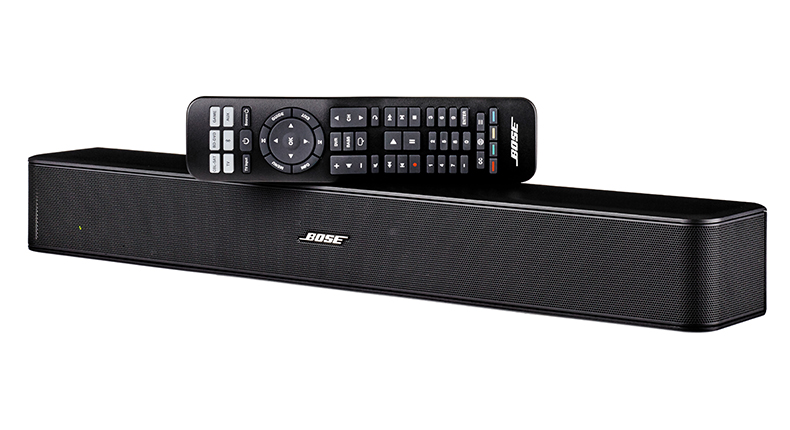What Hi-Fi? Verdict
Its small size will appeal to some, but even at this price, we want more from it in the performance stakes
Pros
- +
Compact size
- +
Easy to use
- +
Universal remote included
- +
Good clarity to dialogue
Cons
- -
Lacks punch
- -
Narrow soundfield
- -
Not very dynamic
- -
Not a vast improvement on standard TV sound
Why you can trust What Hi-Fi?
UPDATE: The Bose Solo 5 has been discontinued. Check out our guide to the best soundbars available right now or scroll down for the original Solo 5 review.
Despite being released over seven years ago, the Solo 5 is still on Bose's soundbar roster, for better and for worse. It's still the pleasingly compact and user-friendly soundbar that we first met in 2016, but it's also still very much style over substance with a sound that isn't much of an improvement over your TV's built-in speakers.
Soundbars have also come a long way since 2016, with the introduction of Dolby Atmos soundbars and other compact soundbars that sound a lot better, like the Sonos Ray. So where does that leave us with the Solo 5? Well, it's not all bad news...
Build
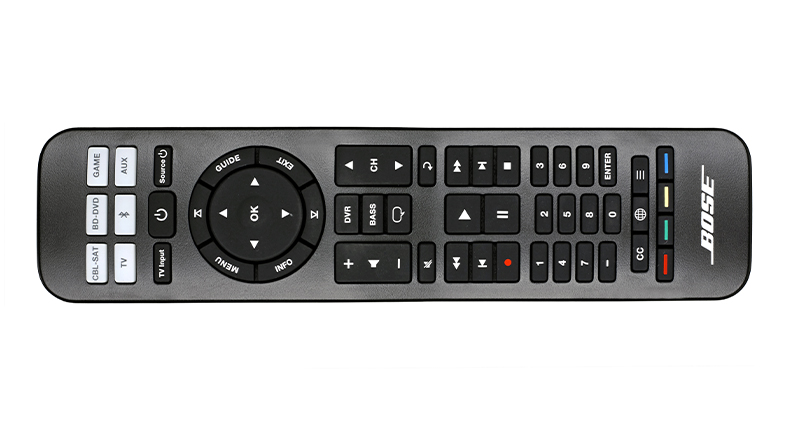
The Solo 5 keeps things pretty simple from a design perspective, with the aim of sitting underneath your TV (or wall mounted if you prefer) without much fuss.
There are no buttons or switches to complicate things, just a plain black grille to the front and black plastic to the top and sides, which helps to keep it light, while still feeling well built.
Behind the grille lie just two drivers, positioned in the centre of the unit and angled out slightly in an aim to deliver a wider soundfield. A couple of LED status indicators illuminate and change colour to let you know when certain features are enabled, plus they’ll also blink in acknowledgement as you change volume.
You control the soundbar using the rather substantial remote, which at about half the size of the soundbar itself feels a little on the chunky side.
However, that’s because as well as working with the soundbar, it can also be programmed as a universal remote for your TV, Blu-ray player and any other infrared device.
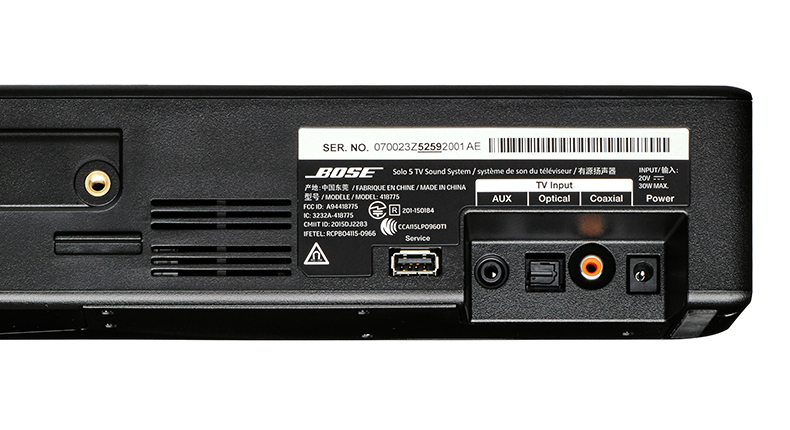
In terms of connectivity, Bose delivers what we’d expect at this price, including optical, coaxial and auxiliary inputs, plus built-in Bluetooth for streaming music.
It offers a few neat tricks too, such as its auto-wake feature, which will see the soundbar jump to life whenever it picks up an audio signal. It’ll power off automatically too, after 60 minutes of inactivity.
Other than that, Bose keeps things relatively straightforward. There aren’t stacks of sound modes, EQ options or settings to choose from – it’s designed to be plug and play, and it in that respect, it largely succeeds.
We connect it using the optical cable included in the box (the recommended connection, though a coaxial cable is also included) and the Bose Solo 5 is good to go.
The only thing you’ll want to check is that your TV speakers are turned off – you should find that option somewhere in your TV’s sound settings.
MORE: Best soundbars 2016
Sound
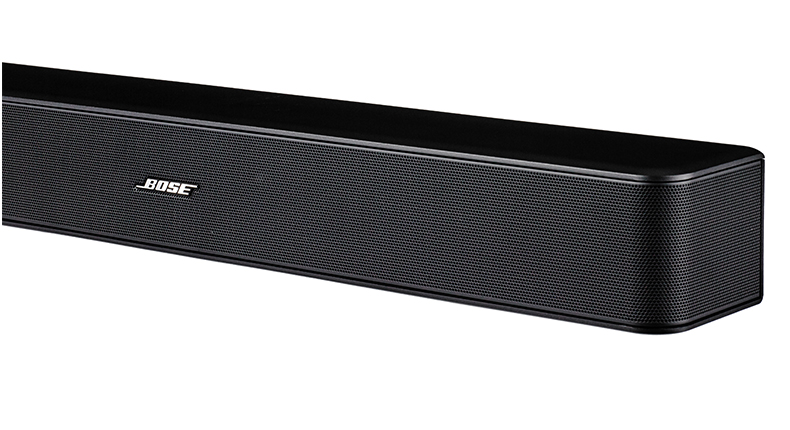
Unfortunately the dimensions of the Bose Solo 5 work against it as soon as you start listening.
The size of your TV will impact how much of a difference it’s able to make though, and it is worth bearing in mind that a small TV is likely to benefit more from the Solo 5 than a larger one.
We hook it up to a 32in Samsung set and settle in with Gravity on Blu-ray. Immediately the Solo 5 lays its cards on the table, dialling up the volume to a decent level, and adding clarity and weight compared with the TV’s native sound.
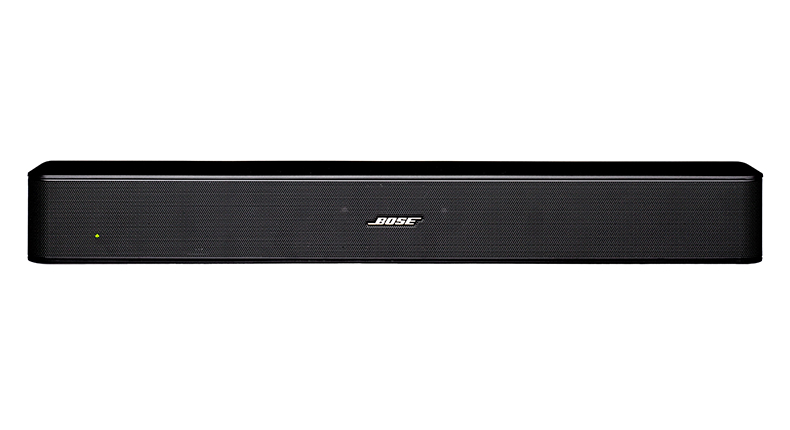
Voices are projected better and with good clarity (so much so that we didn’t feel the need to use the included dialogue mode), and the overall presentation has more body and solidity to it, avoiding the thin, hard sound that many slim TVs tend to have. The midrange is focused and direct, with a controlled, crisp treble.
Look deeper than that, though, and there’s little more to it. Sure, there is better weight on offer than most TVs can muster, but bass is still lacking in absolute terms.
This means that when it comes to giving any sense of punch or impact to big explosions or action scenes, the Solo 5 falls short. There is a bass boost option, which can help the low end sound a little more substantial, but it also sacrifices some midrange clarity.
Even with bass boost turned on, we still find ourselves wanting more, and though there’s additional weight, it still lacks any real presence.
MORE: Best soundbars under £200
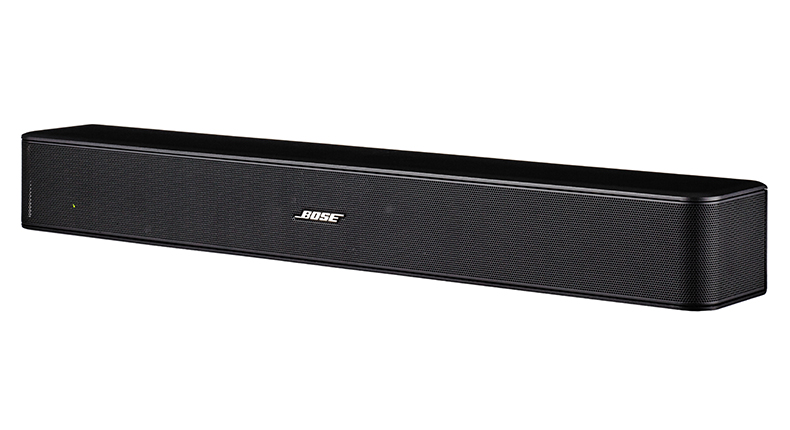
It underwhelms elsewhere too. There’s not significantly more detail on offer than what your TV manages on its own, and it falls flat dynamically, lacking the ability to build any sort of tension or excitement with soundtracks.
The positioning of the drivers in the middle of the bar shows as well, creating a narrow soundfield that is so much smaller than the wide, room-filling sound you’ll get from the likes of the Philips HTL5140.
As for music, we select the Bluetooth icon on the remote and pair to the Solo 5 without issue. Streams from Spotify are delivered with decent clarity and solidity, but they carry the same character as movies.
Detail falls short, bass could be harder hitting and it needs to be better dynamically to be truly engaging.
Verdict
Overall the Bose Solo 5 is a simplistic soundbar that ultimately achieves its two main aims – to boost your TV’s sound and look good while doing so.
The problem is that it doesn’t add a great deal more to the experience outside of that. It has more talented competition, which might not match its dimensions and convenience, but blow it out of the water when it comes to performance.
If you’re looking for a dinky soundbar to add a touch of weight and clarity to a smaller TV in your house, you might want to take a look. For anything more substantial than that, you can do better elsewhere.
See all our Bose reviews
See all our soundbar reviews
What Hi-Fi?, founded in 1976, is the world's leading independent guide to buying and owning hi-fi and home entertainment products. Our comprehensive tests help you buy the very best for your money, with our advice sections giving you step-by-step information on how to get even more from your music and movies. Everything is tested by our dedicated team of in-house reviewers in our custom-built test rooms in London, Reading and Bath. Our coveted five-star rating and Awards are recognised all over the world as the ultimate seal of approval, so you can buy with absolute confidence.
